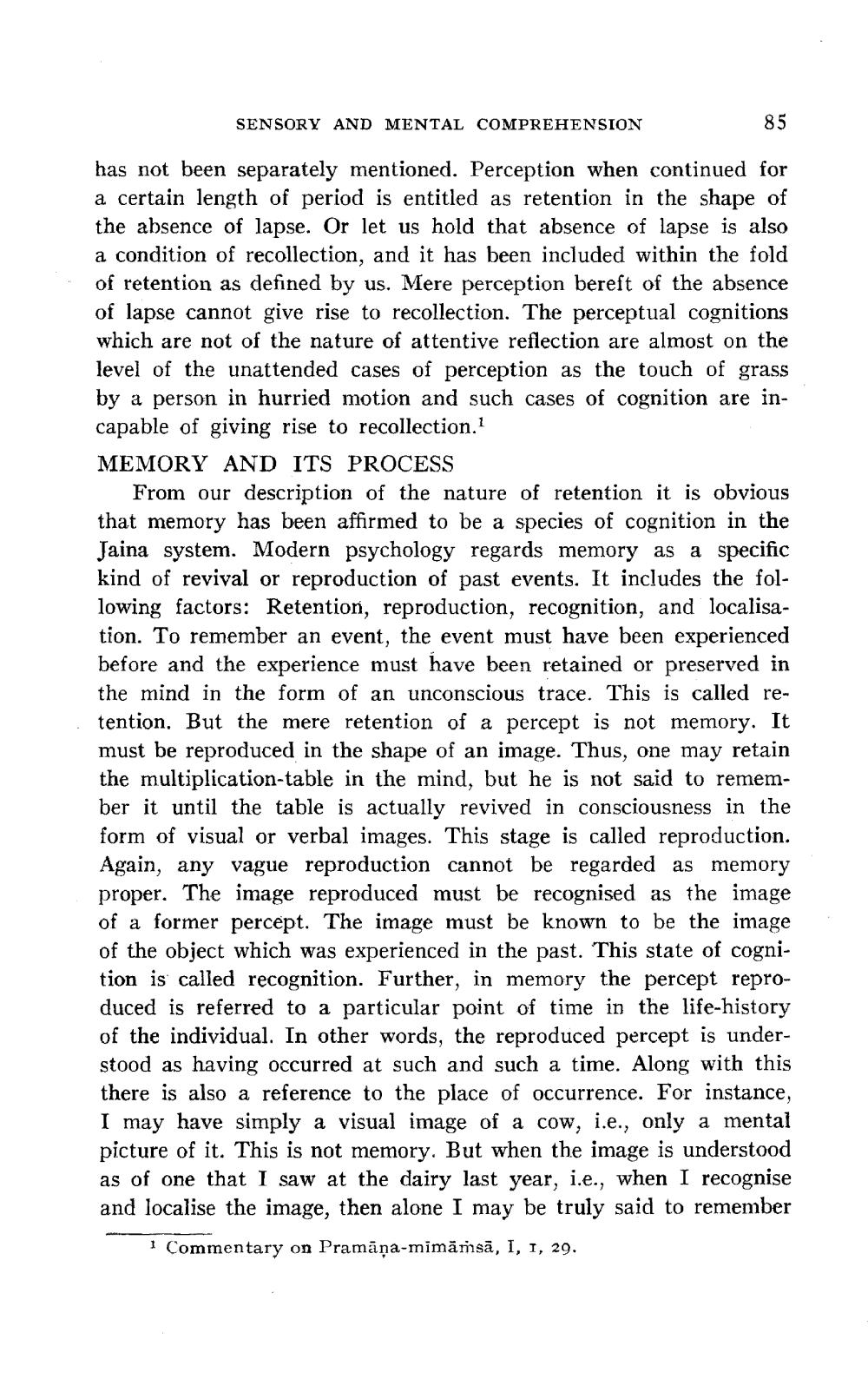________________
SENSORY AND MENTAL COMPREHENSION
85
has not been separately mentioned. Perception when continued for a certain length of period is entitled as retention in the shape of the absence of lapse. Or let us hold that absence of lapse is also a condition of recollection, and it has been included within the fold of retention as defined by us. Mere perception berest of the absence of lapse cannot give rise to recollection. The perceptual cognitions which are not of the nature of attentive reflection are almost on the level of the unattended cases of perception as the touch of grass by a person in hurried motion and such cases of cognition are incapable of giving rise to recollection.? MEMORY AND ITS PROCESS
From our description of the nature of retention it is obvious that memory has been affirmed to be a species of cognition in the Jaina system. Modern psychology regards memory as a specific kind of revival or reproduction of past events. It includes the following factors: Retention, reproduction, recognition, and localisation. To remember an event, the event must have been experienced before and the experience must have been retained or preserved in the mind in the form of an unconscious trace. This is called retention. But the mere retention of a percept is not memory. It must be reproduced in the shape of an image. Thus, one may retain the multiplication-table in the mind, but he is not said to remember it until the table is actually revived in consciousness in the form of visual or verbal images. This stage is called reproduction. Again, any vague reproduction cannot be regarded as memory proper. The image reproduced must be recognised as the image of a former percept. The image must be known to be the image of the object which was experienced in the past. This state of cognition is called recognition. Further, in memory the percept reproduced is referred to a particular point of time in the life-history of the individual. In other words, the reproduced percept is understood as having occurred at such and such a time. Along with this there is also a reference to the place of occurrence. For instance, I may have simply a visual image of a cow, i.e., only a mental picture of it. This is not memory. But when the image is understood as of one that I saw at the dairy last year, i.e., when I recognise and localise the image, then alone I may be truly said to remember
Commentary on Pramāņa-mimāṁsā, I, I, 29.




